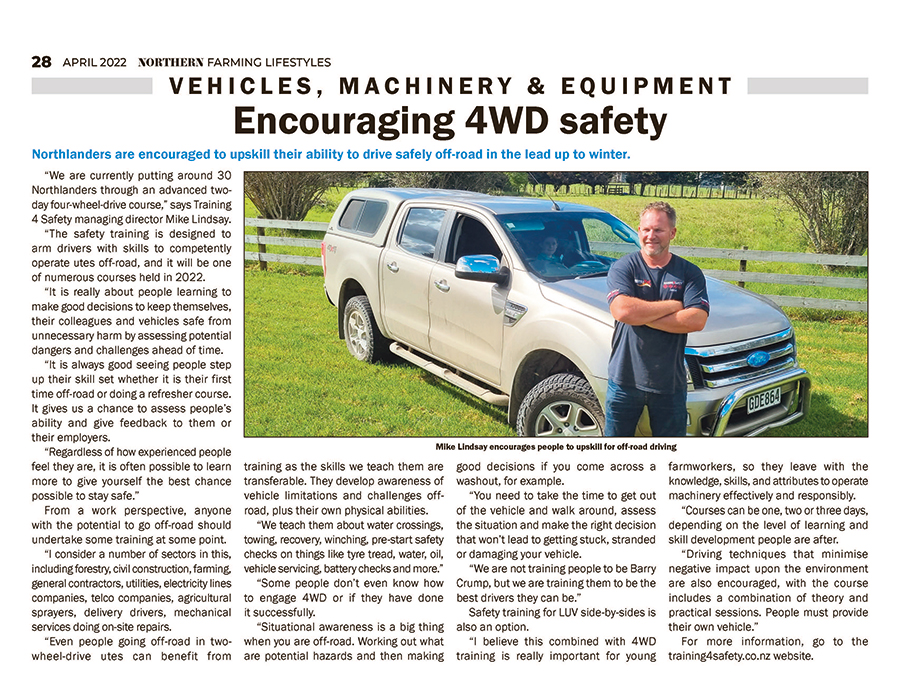Encouraging Four-Wheel Drive Safety
“We are currently putting around 30 Northlanders through an advanced two day four-wheel-drive course,” says Training 4 Safety managing director Mike Lindsay. “The safety training is designed to arm drivers with skills to competently operate utes off-road, and it will be one of numerous courses held in 2022. It is really about people learning to make good decisions to keep themselves, their colleagues and vehicles safe from unnecessary harm by assessing potential dangers and challenges ahead of time. It is always good seeing people step up their skill set whether it is their first time off-road or doing a refresher course. It gives us a chance to assess people’s ability and give feedback to them or their employers. Regardless of how experienced people feel they are, it is often possible to learn more to give yourself the best chance possible to stay safe.”
“From a work perspective, anyone with the potential to go off-road should undertake some training at some point. I consider a number of sectors in this, including forestry, civil construction, farming, general contractors, utilities, electricity lines companies, telco companies, agricultural sprayers, delivery drivers, mechanical services doing on-site repairs.
Even people going off-road in two wheel drive utes can benefit from training as the skills we teach them are transferable. They develop awareness of vehicle limitations and challenges offroad, plus their own physical abilities. “We teach them about water crossings, towing, recovery, winching, pre-start safety checks on things like tyre tread, water, oil, vehicle servicing, battery checks and more. Some people don’t even know how to engage 4WD or if they have done it successfully. Situational awareness is a big thing when you are off-road. Working out what are potential hazards and then making good decisions if you come across a washout, for example. You need to take the time to get out of the vehicle and walk around, assess the situation and make the right decision that won’t lead to getting stuck, stranded or damaging your vehicle. We are not training people to be Barry Crump, but we are training them to be the best drivers they can be. Safety training for LUV side-by-sides is also an option. I believe this combined with 4WD training is really important for young farmworkers, so they leave with the knowledge, skills, and attributes to operate machinery effectively and responsibly. Courses can be one, two or three days, depending on the level of learning and skill development people are after. Driving techniques that minimise negative impact upon the environment are also encouraged, with the course includes a combination of theory and practical sessions. People must provide their own vehicle.”
